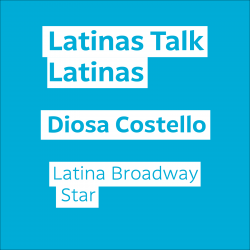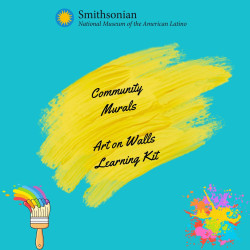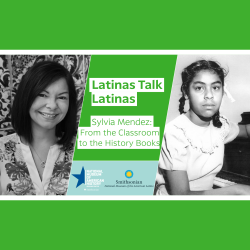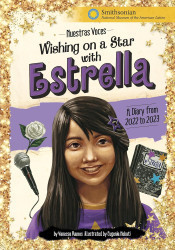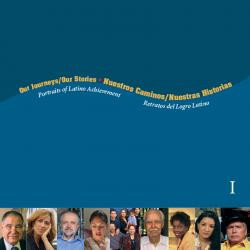Smithsonian Latino Museum
The Smithsonian’s National Museum of the American Latino advances the representation, understanding and appreciation of Latino history and culture in the United States. The museum provides financial resources and collaborates with other museums to expand scholarly research, public programs, digital content, collections and more. The museum’s Molina Family Latino Gallery is the Smithsonian’s first gallery dedicated to the Latino experience. The legislation creating the National Museum of the American Latino at the Smithsonian passed Dec. 27, 2020. Connect with the museum at latino.si.edu, and follow @USLatinoMuseum on Facebook, Instagram and Twitter.
Smithsonian Latino Museum's collections
Diosa Costello, Latinas Talk Latinas
 Smithsonian Latino Museum
Smithsonian Latino Museum
Álida Ortiz Sotomayor, Latinas Talk Latinas
 Smithsonian Latino Museum
Smithsonian Latino Museum
Fashioning Identity: The Queen of Salsa Celia Cruz
 Smithsonian Latino Museum
Smithsonian Latino Museum
Voices y Valor: Latinas in the U.S. Army
 Smithsonian Latino Museum
Smithsonian Latino Museum
Community Murals: Art on Walls
 Smithsonian Latino Museum
Smithsonian Latino Museum
Collidoscope: De la Torre Brothers Retro-Perspective Learning Kit
 Smithsonian Latino Museum
Smithsonian Latino Museum
Jovita González, Latinas Talk Latinas
 Smithsonian Latino Museum
Smithsonian Latino Museum
Jovita Idar, Latinas Talk Latinas
 Smithsonian Latino Museum
Smithsonian Latino Museum
Gilda Mirós, Latinas Talk Latinas
 Smithsonian Latino Museum
Smithsonian Latino Museum
¡Descubra! Breaking Barriers in Space
 Smithsonian Latino Museum
Smithsonian Latino Museum
Nuestras Voces: On the Home Front with Valentina
 Smithsonian Latino Museum
Smithsonian Latino Museum
Nuestras Voces: Paloma's Song for Puerto Rico
 Smithsonian Latino Museum
Smithsonian Latino Museum

